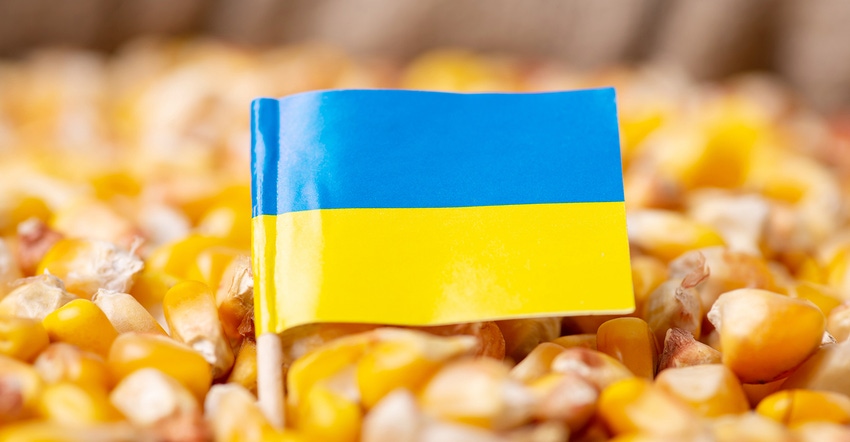
After months of buildup, Russia officially invaded Ukraine on Feb. 24, 2022. Less than three weeks later, commodities have faced turbulent shifts, especially for crude oil and wheat prices, which have gone on a nearly unprecedented rollercoaster ride in recent sessions.
The good news – Russia’s hopes for an “easy win” appear to have been a miscalculation, and ceasefire negotiations are said to be ongoing between the two countries. Much remains at stake for the agriculture industry, with many unanswered questions. For example, will Ukrainian farmers be able to plant their 2022 crops unimpeded? And what will Russian and Ukrainian agriculture exports look like going forward? And for U.S. farmers – what does the current situation mean for export opportunities, along with input/fuel costs and availability?
Multiple experts, including CoBank senior economist Ken Zuckerberg, have been busy modeling out possible scenarios. Zuckerberg admits that it’s incredibly difficult to predict outcomes when so many unintended consequences remain on the table.
“Markets are going through a period of price discovery for all grain and fertilizer commodities,” he says. “Without a doubt, there will be more volatility.”
Brandon Neuschafer, partner with Bryan Cave Leighton Paisner, largely agrees.
“The biggest impact right now is in the volatility,” he says. “A lot of uncertainty has been injected into the markets.”
Market mania
Energy prices lend an excellent example. As of March 15, crude oil is back below $100 per barrel after spiking to $130 earlier this month. Diesel and gasoline have followed a similar path, soaring significantly higher early after the invasion but plummeting back to pre-war levels since then.
Grain prices have also been in disarray amid the myriad of unanswered questions. Prices have backed off multi-year highs but remain at relatively excellent levels. Russia and Ukraine’s grain exports are clearly struggling at the moment amid prohibitively expensive freight costs and many containers failing to secure insurance to sail out of the Black Sea.
At the same time, several countries heavily depend on grain exports from Russia and Ukraine. Taking a look at wheat, Turkey secures 75% of this commodity from those two countries. Egypt’s export share is 70%, and and more than half (52%) of Tunisia’s sales come from the Black Sea region.
Zuckerberg posits that several sources, including the United States, European Union, Argentina and Australia, “will potentially be able to produce and sell more” as a consequence.
Another interesting player worth monitoring is India, which is the world’s No. 2 wheat producer but typically keeps the vast majority of its stocks for domestic use. But after a bin-busting harvest that has doubled its target domestic stocks, that situation is expected to change. India could export as much as 257 million bushels of wheat this year.
Climbing food costs
Beyond the farm gate, food prices have been marching higher – first on a wave of covid-related supply chain woes, which has only been exacerbated by the geopolitical turmoil from the Black Sea region. That makes for a fairly unusual situation, according to University of Missouri Extension agricultural economics professor Scott Brown.
“For 2021, the annual CPI [consumer price index] for food is up 3.9%,” he notes. “That’s the largest annual increase since 2008, when we were up 5.5%. The February 2022 CPI for food is 7.9% higher than the year-ago level, the highest increase since July 1981.”
Brown says the CPI averages 1.7% from 2010 to 2019, and that may be a good long-term place to frame future levels once the dust settles on the latest Black Swan events.
“I think we will find ourselves in a better situation when we don’t have the same labor shortages we have today, and we have other inputs like crude oil moving lower,” he says. “But predicting either of those events is tough. I’m not convinced we lose these costs very quickly.”
Conflict breeds hunger, adds Claire Casey, global head of policy and insights for Economist Impact.
“The story gets much more complicated when the country in question is one of the breadbaskets of the world,” she says. “The implications of this war will not be limited to Ukraine – it will have far-reaching consequences globally.”
Neuschafer also doesn’t expect the current state of volatility and instability to change anytime soon, even if the war winds quickly down.
“The impact of this will last for years,” he says. “It’s not like we immediately go back to the way we were before.”
Amid the chaos, what action items can farmers take to mitigate risk? Neuschafer applauds farmers for already having to make business decisions every day in the context of volatile commodity and input prices. They should continue on that path as much as they are able, he says.
“Gather the information and understand your input costs based on expected prices,” he says. “Try to make sure you have as good data as possible when you’re making those decisions.”
About the Author(s)
You May Also Like






